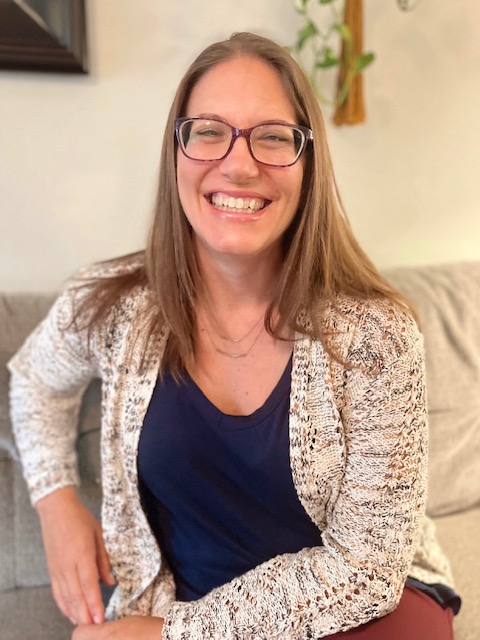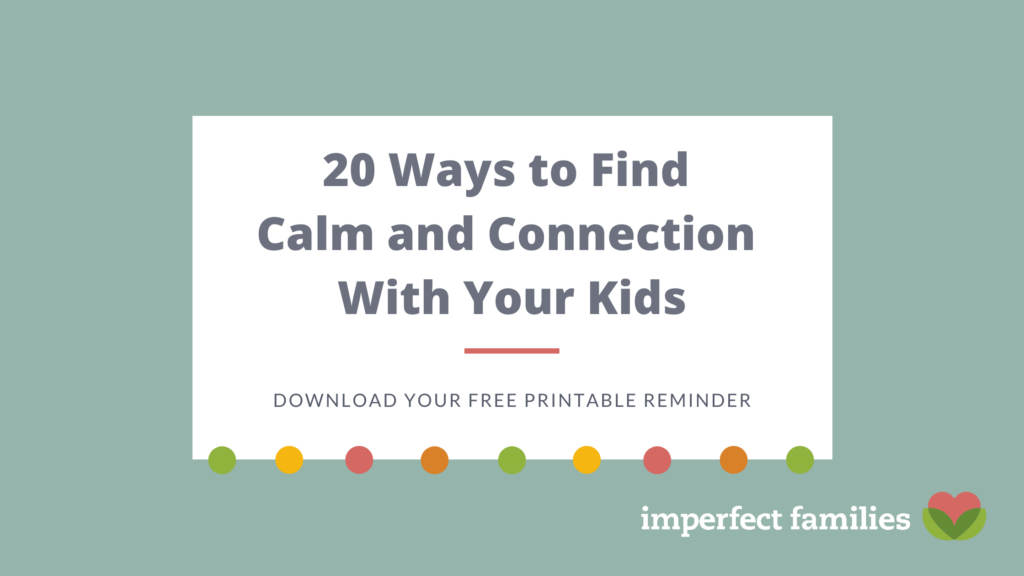It’s never too early to start talking to kids about race and racism. These tips will help you get the conversation started.

Saraa D. Lee, MSW, LCSW, shares her tips for talking about race with our kids. Check out her website Pacific Burnout Therapy or on Facebook.
Conversations about race are always happening around us. Always. Every bit of media and every person participates at all times. Just like in a painting, where the filled and blank spaces come together to form the entire work, both what is said and what is left unsaid matter immensely. For example, I absolutely adore Mr. Rodgers but the absence of one or more equally publicly celebrated paternal figures of color in children’s media is an example of white supremacy shaping the children’s conversation on race. An Asian-American, Latinx, Native-American or Black American father figure could have filled that role if it didn’t also require a unique blend of access and privilege that our society exclusively extends to white people.
I’ll share a scene from my own life as another example of how parents and children are constantly participating in the discourse on race, whether we want to or not. Last fall, my 2-year-old daughter pointed to an African American man on TV and said “I don’t like that black guy.” We were watching a political talk show, which can be stressful at times for anyone. I understood her not liking the show, but I was bothered by the fact that she singled out the Black man as the source of her distress. I was additionally stunned by her language. She chose to say “Black” (racial identity) instead of “brown” (observed skin color). She also said “guy,” which is a term I never use to refer to Black men, as it indicates a discomfort with black masculinity, which is part of the history of anti-blackness in this country. Other men are “men” but this one was a “guy.” This was clearly a term she had absorbed from someone/somewhere else. To drive the point home, she also began to cry whenever our cousin would come by to visit us. He is a very large and gorgeously dark-skinned teenager who she also began to say she didn’t like.
At the time, I was a stay-at-home mother seeing a tiny number of clients in my virtual private practice…from home. I was with her nearly 24/7. We also didn’t watch TV outside of some select shows via laptop. I mistakenly chose to be silent on race because I assumed that she was safe. I thought she would have enough implicit messages about black love, value, and beauty from her life. I am a richly brown-skinned Black woman and her father is a light-skinned bi-racial Black man (whose father is a very woke White man). Our family (both blood and chosen) is filled with people whose origins span the globe. I thought that I had plenty of time to just let her enjoy being a child before discussing race. Unfortunately, my silence on race left plenty of blank space in the mind of my little baby girl to be passively filled by racist and white supremacist narratives about Black people (particularly men) and how she should feel about them.
Talking to Kids About Race
My guidance is that we need to be mindful, proactive, and start very early identifying and celebrating race. Even babies notice race, since skin color, facial features, and hair are pretty helpful tools for identifying people. To ignore race allows room for the child to internalize bias implicitly – including that there is something shameful about noticing or having phenotypical differences.
Please do start as early as possible, but also remember that today is as good as any to get started. Just compassionately accept the truth of where you are and go!
Be certain to identify White as a racial category and name whiteness as often as you can to disrupt the narrative of White as “normal” or “default.”
Parents should work to consistently clarify that there is no inherent non-phenotypic biological difference that justifies “race” but that we still use it socially to describe recent or distant ancestral origin. The idea of “race” as a big family group works well and is accurate.
Also talk about the human race generally and how people come together to form families, to be happy and to live as well as possible. Within this context, identify how different cultures have their own unique methods – and focus on their joys. Make these conversations relatable by identifying examples from your child’s world.
Other Tips for Talking to Your Child About Race:
- Identify and describe people by a number of factors, including skin color or hair. Don’t avoid phenotype, but also don’t use it to definitely label. We often don’t know a person’s race, and leaving space for that will model that race is nuanced. Say: “I think the person is African American/Asian-American/Latino/Indigenous/White, etc…, but we don’t know how they identify.”
- Do some reading and google searching to find a race positive language of phenotype so you don’t skip a beat in noticing and embracing differences. Words like: deep brown, tan, light brown, epicanthic folds, tightly curled, wavy, rounded eyes, rounded nose, slender, curvy. This helps children to do the same. They will learn to speak respectfully of and appreciate differences.
- When you see a negative stereotype, call attention to it and debunk it immediately to counter implicit racist messages. Do the same for White privilege. Immediately notice when a person is given preferential treatment due to race and call attention to it, especially if you are white and it is happening to you or your child. Model using your white privilege to make social change. For families of color, do the same if you or your child has light-skinned privilege.
- Choose diverse books, shows, and other media – in which non-white characters are the main characters – consistently, not just on special occasions.
- Notice and compliment difference. Fill the space where you are tempted to be “color blind.” If you see your child struggling, help them to voice what they notice to provide them with healthy and positive language to discuss racial differences.
- Be anti-racist in truth and action, and your child will absorb all of your accompanying actions, verbal and non-verbal communications. Be sure that you are also reading books by and learning from people of all races. Let your child see you advocating for social justice and racial equity – and invite them to participate!
- This one is complicated but necessary: ask your child to examine their choices. For example, if the child chooses a White doll over a brown-skinned doll ask directly: “What do you like most about this doll?” This is an opportunity to offer a positive note about the doll of color. I do this with my child all the time. If she chooses the white doll because “she looks happy” there is an opportunity to say something like: “Thank you for sharing. This other dollie also seems very happy, so I’ll choose her!” Then play. This isn’t to invalidate her perception, but to use play to ensure that she internalizes the fact that positive characteristics can apply to anyone of any race.
It’s hard, but we need to work to stay involved in the constant racial conversation that society is having with our kids. Silence is enabling, as it fills the passive space in a world which allows people to be singled out and dehumanized because of their perceived racial category.
Take a lot of deep breaths and be comfortable saying “I don’t know” to your children. But also model taking the time to learn. You don’t have to be perfect, but your participation needs to be proactively anti-racist (which includes being anti-colorist).
 Saraa D. Lee, MSW, LCSW, is a California and Illinois based Licensed Clinical Social Worker who uses a blend of mindfulness, black feminist thought, and trauma-informed evidence-based practices to provide dynamic and culturally enriched wellness services. She owns Pacific Burnout Therapy, a virtual private practice, where her treatment areas of focus include work-life harmony, parental self-care, anxiety disorders, and trauma. She also operates Progressive Parent Coaching. Saraa earned a Master’s Degree in Social Welfare from UCLA’s Luskin School of Public Affairs in 2012. Saraa graduated from Pomona College in 2007 with a BA in psychology, after which she was awarded a Fulbright Grant to research and teach in South Korea. Saraa is the mother of a very joyful almost 3-year-old. She is also a hobby artist who draws, paints, plays the violin, and enjoys dancing as often as she can.
Saraa D. Lee, MSW, LCSW, is a California and Illinois based Licensed Clinical Social Worker who uses a blend of mindfulness, black feminist thought, and trauma-informed evidence-based practices to provide dynamic and culturally enriched wellness services. She owns Pacific Burnout Therapy, a virtual private practice, where her treatment areas of focus include work-life harmony, parental self-care, anxiety disorders, and trauma. She also operates Progressive Parent Coaching. Saraa earned a Master’s Degree in Social Welfare from UCLA’s Luskin School of Public Affairs in 2012. Saraa graduated from Pomona College in 2007 with a BA in psychology, after which she was awarded a Fulbright Grant to research and teach in South Korea. Saraa is the mother of a very joyful almost 3-year-old. She is also a hobby artist who draws, paints, plays the violin, and enjoys dancing as often as she can.



Comments have been turned off to retain the privacy of all families. If you have a question or comment on the topic, you're always welcome to contact me.